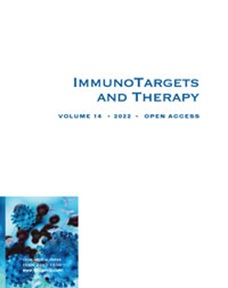Managing Cardiovascular Risk in Systemic Lupus Erythematosus: Considerations for the Clinician
IF 6.2
Q1 IMMUNOLOGY
引用次数: 0
Abstract
Abstract A significant improvement in the survival of patients with systemic lupus erythematosus (SLE) over recent decades is largely attributed to the impact of disease-modifying therapies on end-organ damage. Thus, cardiovascular disease now represents the leading cause of mortality in SLE. Various disease-specific mechanisms are responsible for advanced atherosclerosis, as they lead to premature endothelial dysfunction, arterial stiffness, arterial wall thickening, and plaque formation. Consequently, in the assessment of cardiovascular risk in SLE, we must not only consider traditional risk factors (ie, age, gender, dyslipidemia) but also the additional role of non-traditional risk factors such as persistent disease activity and prolonged corticosteroid use. Cardiovascular risk assessment incorporates general cardiovascular screening, as existing risk prediction scores underestimate cardiovascular risk in this patient population. There is also an expanding role of imaging modalities in screening. Risk reduction strategies integrate unique considerations for the use of low-dose aspirin and more stringent hypertension targets. Hydroxychloroquine is the only disease-modifying therapy with known cardiovascular benefit in SLE, though this is a promising area of study.管理系统性红斑狼疮的心血管风险:临床医生的注意事项
近几十年来,系统性红斑狼疮(SLE)患者生存率的显著提高主要归因于疾病修饰疗法对终末器官损伤的影响。因此,心血管疾病现在是SLE患者死亡的主要原因。各种疾病特异性机制是导致晚期动脉粥样硬化的原因,因为它们导致过早的内皮功能障碍、动脉僵硬、动脉壁增厚和斑块形成。因此,在评估SLE的心血管风险时,我们不仅要考虑传统的风险因素(如年龄、性别、血脂异常),还要考虑非传统风险因素的额外作用,如持续的疾病活动性和长期使用皮质类固醇。心血管风险评估包括一般的心血管筛查,因为现有的风险预测评分低估了这一患者群体的心血管风险。成像方式在筛查中的作用也在扩大。降低风险策略结合了使用低剂量阿司匹林和更严格的高血压目标的独特考虑。羟基氯喹是唯一已知对SLE心血管有益的疾病改善疗法,尽管这是一个有前景的研究领域。
本文章由计算机程序翻译,如有差异,请以英文原文为准。
求助全文
约1分钟内获得全文
求助全文
来源期刊

ImmunoTargets and Therapy
IMMUNOLOGY-
CiteScore
16.50
自引率
0.00%
发文量
7
审稿时长
16 weeks
期刊介绍:
Immuno Targets and Therapy is an international, peer-reviewed open access journal focusing on the immunological basis of diseases, potential targets for immune based therapy and treatment protocols employed to improve patient management. Basic immunology and physiology of the immune system in health, and disease will be also covered.In addition, the journal will focus on the impact of management programs and new therapeutic agents and protocols on patient perspectives such as quality of life, adherence and satisfaction.
 求助内容:
求助内容: 应助结果提醒方式:
应助结果提醒方式:


